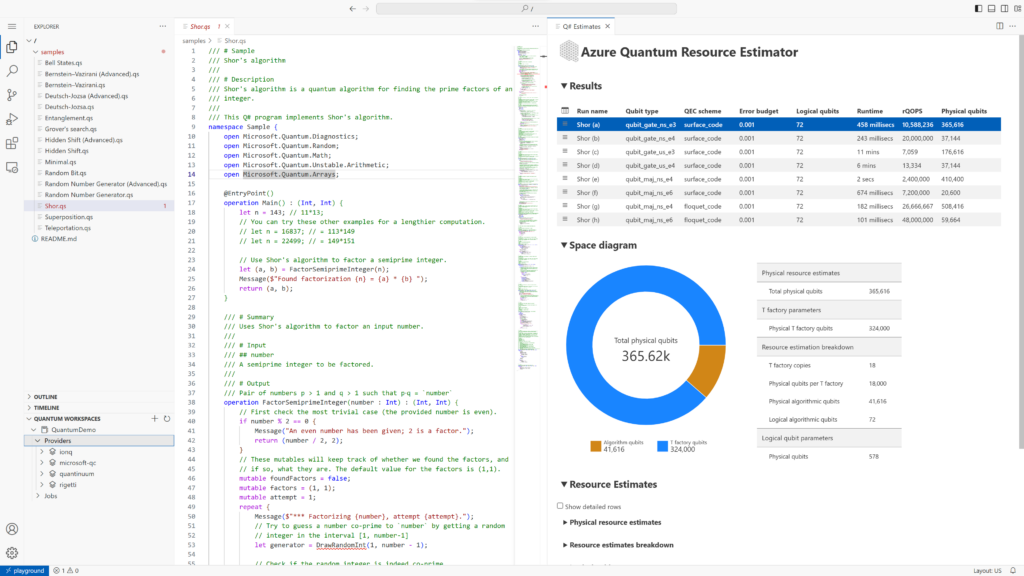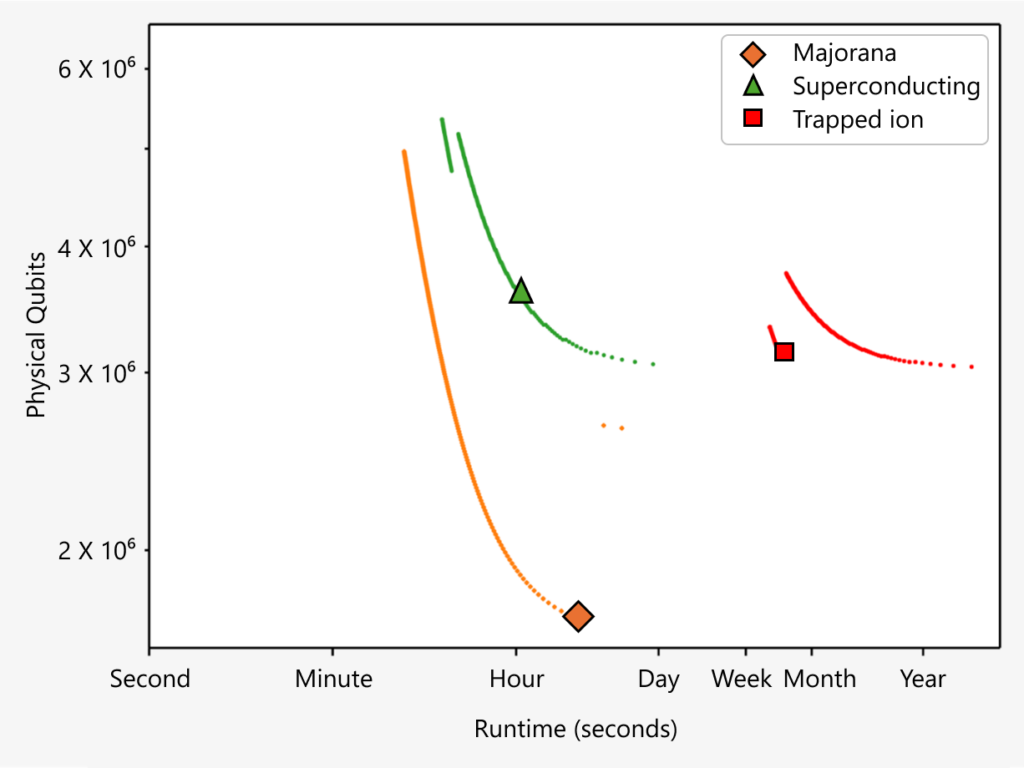Design Fault Tolerant Quantum Computing applications with the open-source Resource Estimator
We are excited to announce that following its initial release the Azure Quantum Resource Estimator is now open-source. It has been integrated with the Modern QDK making it run up to 100x faster, and running across PC, Mac, Linux or from your web browser. Try it now.
Why is resource estimation relevant today?
Quantum computing has the potential for widespread societal and scientific impact, and many applications have been proposed for quantum computers. The quantum community has reached a consensus that NISQ machines do not offer practical quantum advantage and that it is time to graduate to the next of the three implementation levels.
Unlike computing with transistors, basic operations with qubits are much more complicated and an order of magnitude slower. We now understand that practical quantum advantage will be achieved for small-data problems that offer super-polynomial quantum speedup (see T. Hoefler et al, CACM 66, 82-87). This includes, specifically, the simulation of quantum systems in quantum physics, chemistry, and materials science.
But at a basic level, there are still many remaining open questions: What are the most promising and useful quantum algorithms on which to build useful quantum applications? Which quantum computing architectures and qubit technologies can reach the necessary scale to run such quantum accelerated applications? Which qubit technologies are well suited to practical quantum supercomputers? Which quantum computing technologies are unlikely to achieve the necessary scale?
That’s why we need the Resource Estimator to help us answer these questions and guide today’s research and development toward logical qubit applications.
Resource Estimator: an open-source tool for every level of the quantum stack
Achieving practical quantum advantage will require improvements and domain expertise at every level of the quantum computing stack. A unified open-source tool to benchmark solutions and collaborate across disciplines will speed up our path toward a quantum supercomputer: this is the premise of Azure Quantum Resource Estimator.

Whether you are developing applications, researching algorithms, designing language compilers and optimizers, creating new error correction codes, or working on R&D for faster, smaller and more reliable qubits, the Resource Estimator helps you assess how your theoretical or empirical enhancements can improve the whole stack.
As an individual researcher, you can leverage prebuilt options to focus on your area. If you are part of a team, you can work collectively at every level of the stack and see the results of your combined efforts.
Easy to start and fully customizable
The Resource Estimator is an estimation platform that lets you start with minimal inputs, abstracting the many specificities of quantum systems. If you require more control, you can adjust and explore a vast number of system characteristics.
The Resource Estimator can quickly explore thousands of possible solutions. This accelerates the development lifecycle and lets you easily review trade-offs between computation time and number of physical qubits.
The table below summarizes some of the ways you can adapt the Resource Estimator to your needs, allowing you to specify both the description of the quantum system and to control the exploration of estimates. Explore all available parameters.
| Describe your system | Explore and control estimates |
|
|
*Currently requires an Azure Subscription
Get started
If you are ready to get started, you can choose from:
- No-code exploration of quantum computing resource estimates for cryptography.
- No-install Q# estimates with VS Code for the Web:
- Open the Modern QDK playground.
- Select one of the Resource Estimation samples such as Shor or quantum dynamics.
- Open the command palette (press CTRL+Shift+P on PC or CMD+Shift+P on Mac) and select Q#: Calculate Resource Estimates.
- Set parameters. In a few seconds, see physical qubits, algorithm runtime, and dozens of breakdown parameters.
- Select a different algorithm for comparison.

- One click install with VS Code, full customization options with Python + Q#, and support for Qiskit with an Azure subscription.
Read more from the documentation.
Participate in the open source project
To join the discussion or contribute to the development of the Resource Estimator, visit https://aka.ms/AQ/RE/OpenSource.
Coming soon
2024-01-29 update: This feature is now available. Learn more from the Pareto frontier documentation.
Understanding the trade-off between runtime and system scale is one of the more important aspects of resource estimation. To help you better understand and visualize the tradeoffs, the Resource Estimator will soon provide fully automated exploration and graphics, such as the one below:
Make sure to subscribe to the Q# blog to be notified of this feature’s availability.



 Light
Light Dark
Dark
0 comments